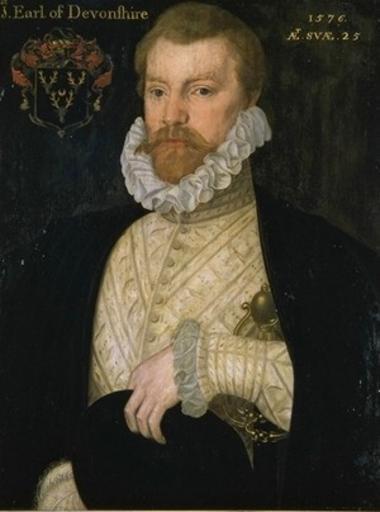MAKE A MEME
View Large Image

| View Original: | William_Cavendish,_1st_Earl_of_Devonshire,_son_of_Bess_of_Harwick.jpg (300x404) | |||
| Download: | Original | Medium | Small | Thumb |
| Courtesy of: | www.flickr.com | More Like This | ||
| Keywords: people indoor William Cavendish, 1st Earl of Devonshire (December 27, 1552 – March 3, 1626) was an English politician and courtier. The second son of Sir William Cavendish and Bess of Hardwick, he was educated with the children of George Talbot, 6th Earl of Shrewsbury, whom his mother married after his father's death. She made him a rich allowance in his youth. He was M.P. for Newport in 1588; high sheriff of Derbyshire, where the estates of his family lay, in 1595; and justice of the peace in 1603. He was created Baron Cavendish of Hardwick in 1605, thanks to the representations of his niece, Arbella Stuart. He participated in the colonisation of the Bermudas, and Devonshire Parish was called after him; he also was a supporter of colonizing Virginia.[1] His mother's death in 1608, and his elder brother Henry's death in 1616, gave him a vast fortune. He was in attendance on James I in a progress in Wiltshire in 1618, and on 2 August was created Earl of Devonshire, while the court was staying at the Bishop of Salisbury's palace; he was reported to have paid £10,000 for the title. He died on 3 March 1626, and was buried at Edensor. His first wife was Anne Kighley or Keighley, daughter of Henry Kighley of Keighley, Yorkshire, circa 21 March 1580. They had three sons and three daughters, including: * William Cavendish, 2nd Earl of Devonshire (c. 1590–1628) * Frances Cavendish (c. 1593–1631), married Henry Pierrepont, had a son named Robert Pierrepont. * Gilbert, who has been credited with the authorship of Horae Subsecivae (see Grey Brydges, 5th Baron Chandos), died young. * James died in infancy. Cavendish's second wife was Elizabeth, daughter of Edward Boughton of Couston, Warwickshire, widow of Sir Richard Wortley of Wortley, Yorkshire, by whom he had a son, John, made a knight of the Bath when Prince Charles was created Prince of Wales in 1618. Sir John died on 18 January 1618. William Cavendish, 1st Earl of Devonshire (December 27, 1552 – March 3, 1626) was an English politician and courtier. The second son of Sir William Cavendish and Bess of Hardwick, he was educated with the children of George Talbot, 6th Earl of Shrewsbury, whom his mother married after his father's death. She made him a rich allowance in his youth. He was M.P. for Newport in 1588; high sheriff of Derbyshire, where the estates of his family lay, in 1595; and justice of the peace in 1603. He was created Baron Cavendish of Hardwick in 1605, thanks to the representations of his niece, Arbella Stuart. He participated in the colonisation of the Bermudas, and Devonshire Parish was called after him; he also was a supporter of colonizing Virginia.[1] His mother's death in 1608, and his elder brother Henry's death in 1616, gave him a vast fortune. He was in attendance on James I in a progress in Wiltshire in 1618, and on 2 August was created Earl of Devonshire, while the court was staying at the Bishop of Salisbury's palace; he was reported to have paid £10,000 for the title. He died on 3 March 1626, and was buried at Edensor. His first wife was Anne Kighley or Keighley, daughter of Henry Kighley of Keighley, Yorkshire, circa 21 March 1580. They had three sons and three daughters, including: * William Cavendish, 2nd Earl of Devonshire (c. 1590–1628) * Frances Cavendish (c. 1593–1631), married Henry Pierrepont, had a son named Robert Pierrepont. * Gilbert, who has been credited with the authorship of Horae Subsecivae (see Grey Brydges, 5th Baron Chandos), died young. * James died in infancy. Cavendish's second wife was Elizabeth, daughter of Edward Boughton of Couston, Warwickshire, widow of Sir Richard Wortley of Wortley, Yorkshire, by whom he had a son, John, made a knight of the Bath when Prince Charles was created Prince of Wales in 1618. Sir John died on 18 January 1618. | ||||